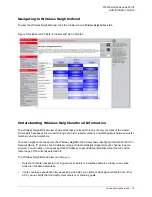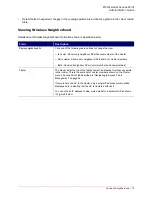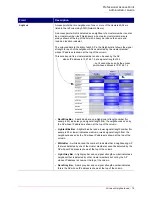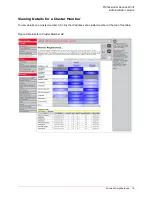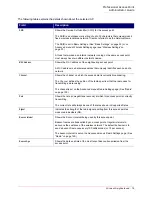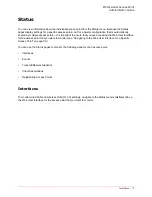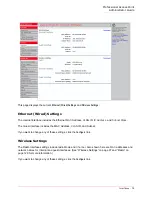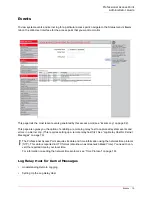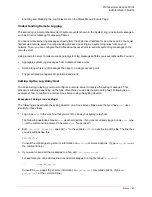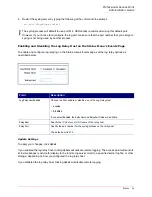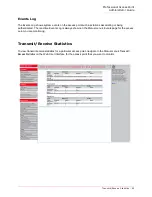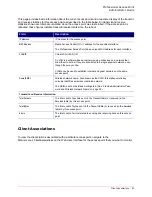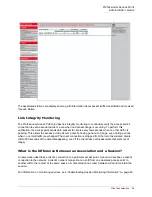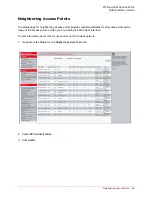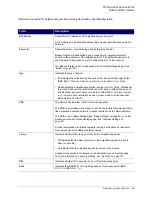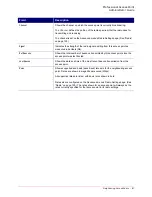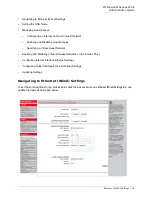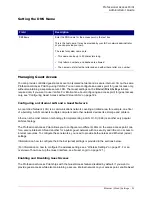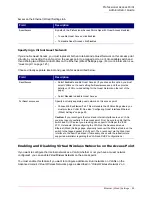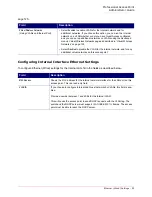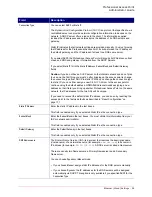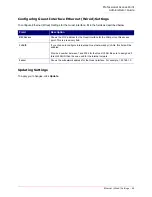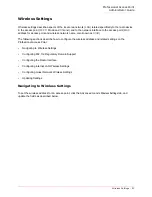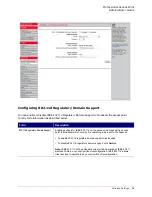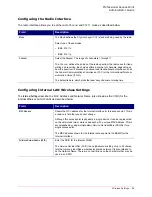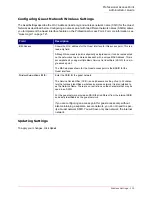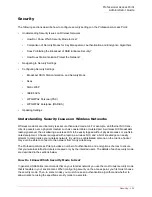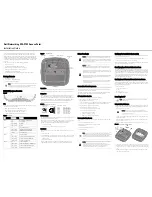
Professional Access Point
Administrator Guide
Neighboring Access Points - 86
Information provided for neighbouring access points is described in the following table:
Field
Description
MAC Address
Shows the
MAC
address of the neighbouring access point.
A
MAC
address is a hardware address that uniquely identifies each node of a
network.
Beacon Int.
Shows the
Beacon
interval being used by this access point.
Beacon frames are transmitted by an access point at regular intervals to
announce the existence of the wireless network. The default behaviour is to
send a beacon frame once every 100 milliseconds (or 10 per second).
The Beacon Interval is set on Advanced menu’s Radio Settings page. (See
“Radio” on page 129.)
Type
Indicates the type of device:
•
AP
indicates the neighbouring device is an access point that supports the
IEEE 802.11
Wireless Networking Framework
in
Infrastructure Mode
.
•
Ad hoc
indicates a neighbouring station running in
Ad-hoc Mode
. Stations set
to ad-hoc mode communicate with each other directly, without the use of a
traditional access point. Ad-hoc mode is an IEEE 802.11
Wireless Network-
ing Framework
also referred to as
peer-to-peer
mode or an
Independent
Basic Service Set
(
IBSS
).
SSID
The
Service Set Identifier
(
SSID
) for the access point.
The SSID is an alphanumeric string of up to 32 characters that uniquely identi-
fies a wireless local area network. It is also referred to as the
Network Name
.
The SSID is set in Basic Settings (see “Basic Settings” on page 35) or on the
Advanced menu’s Wireless Settings page (see “Wireless Settings” on
page 97).
A Guest network and an Internal network running on the same access point
must always have two different network names.
Privacy
Indicates whether there is any security on the neighbouring device.
•
Off
indicates that the Security mode on the neighbouring device is set to
None
(no security).
•
On
indicates that the neighbouring device has security in place.
Access point security is configured on the Advanced menu’s Security page.
For more information on security settings, see “Security” on page 101.
WPA
Indicates whether
WPA
security is on or off for this access point.
Band
Indicates the IEEE 802.11 mode being used on this access point (IEEE
802.11b or
IEEE
802.11g
).
Summary of Contents for Instant802 APSDK
Page 1: ...Professional Access Point Administrator Guide R46 1224 00 rev 2 0 07 06...
Page 2: ......
Page 4: ...Professional Access Point Administrator Guide iv...
Page 8: ...Professional Access Point Administrator Guide viii...
Page 42: ...Professional Access Point Administrator Guide Basic Settings 42...
Page 52: ...Professional Access Point Administrator Guide Access Points 52...
Page 58: ...Professional Access Point Administrator Guide User Management 58...
Page 62: ...Professional Access Point Administrator Guide Sessions 62...
Page 70: ...Professional Access Point Administrator Guide Channel Management 70...
Page 88: ...Professional Access Point Administrator Guide Neighboring Access Points 88...
Page 96: ...Professional Access Point Administrator Guide Ethernet Wired Settings 96...
Page 120: ...Professional Access Point Administrator Guide Security 120...
Page 128: ...Professional Access Point Administrator Guide Virtual Wireless Networks 128...
Page 134: ...Professional Access Point Administrator Guide Radio 134...
Page 138: ...Professional Access Point Administrator Guide MAC Filtering 138...
Page 152: ...Professional Access Point Administrator Guide Quality of Service 152...
Page 160: ...Professional Access Point Administrator Guide Wireless Distribution System 160...
Page 164: ...Professional Access Point Administrator Guide Time Protocol 164...
Page 170: ...Professional Access Point Administrator Guide SNMP 170...
Page 290: ...Professional Access Point Administrator Guide Configuration Troubleshooting 290...
Page 298: ...Professional Access Point Administrator Guide Regulatory Information 298...
Page 328: ...Professional Access Point Administrator Guide Index 328...

